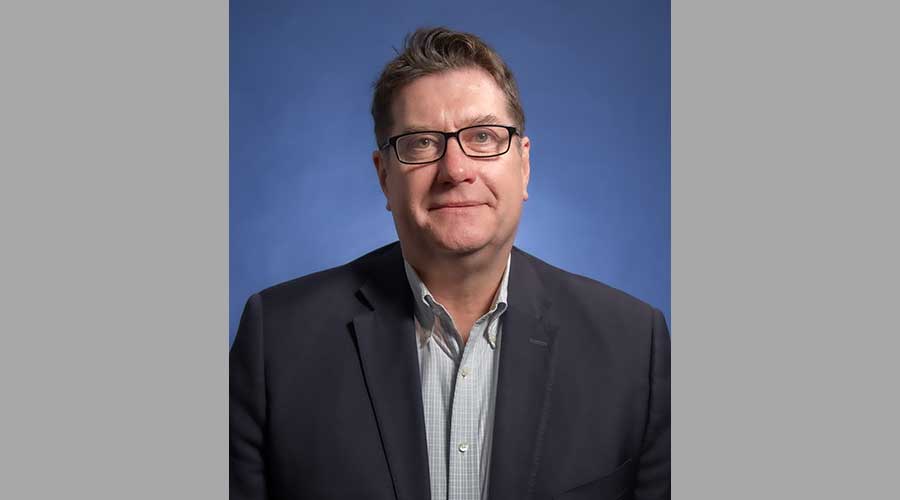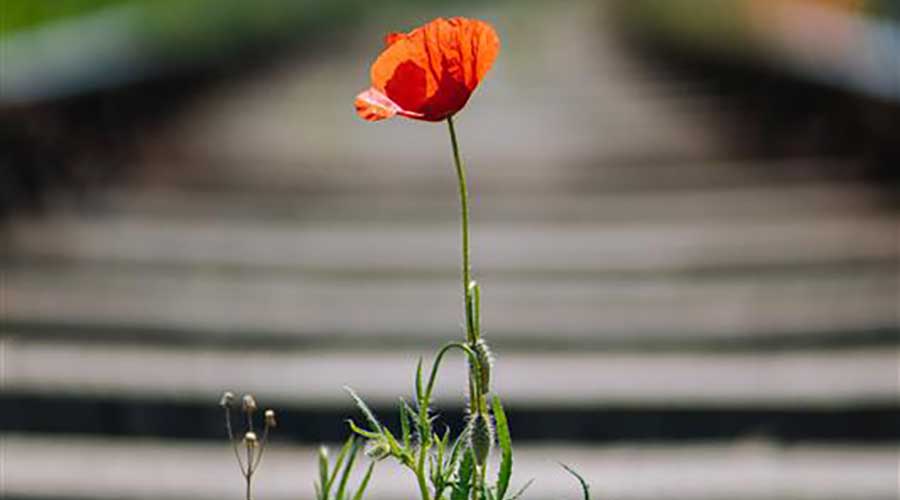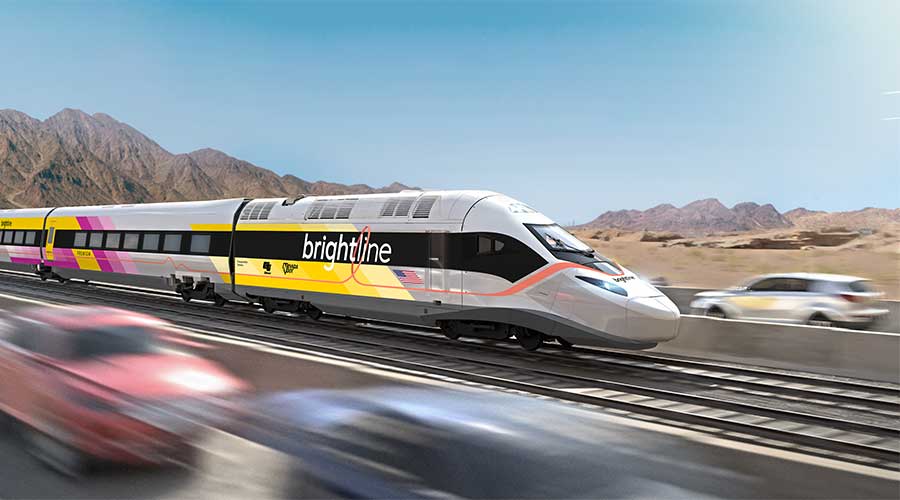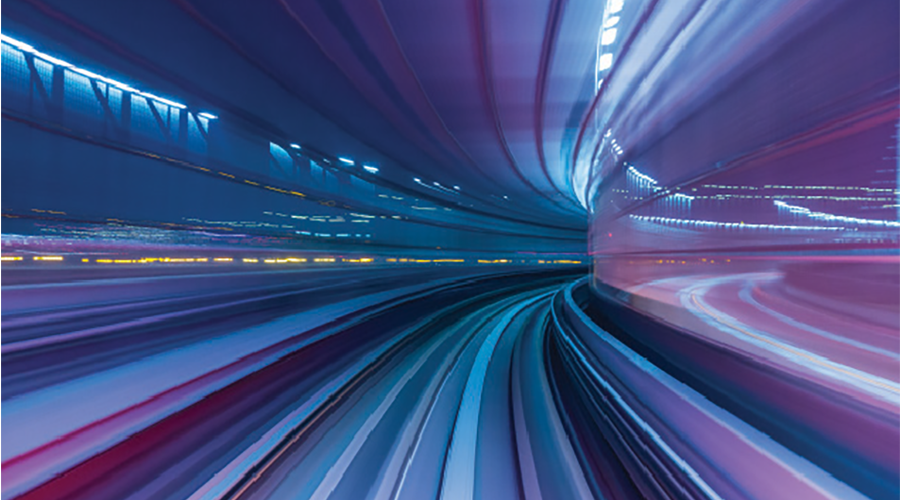Stay updated on news, articles and information for the rail industry
May 2018
Rail News: Passenger Rail
DART's light-rail system is about to get even longer
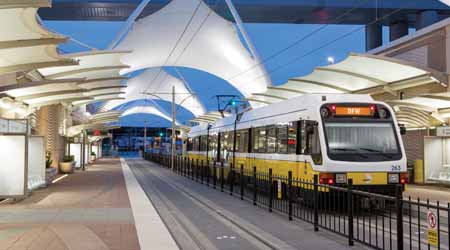
By Julie Sneider, Senior Associate Editor
Anyone who meets Dallas Area Rapid Transit (DART) President/Executive Director Gary Thomas doesn't have to wait long before he mentions that Dallas is home to "the longest light-rail system in North America."
Thomas can't help but be enthusiastic about the agency’s expansion to 93 miles of light-rail lines — 20 miles of which have been added just since 2012. Besides light rail, DART operates 35 miles of commuter-rail lines and 2.5 miles of streetcar routes in Dallas.
DART — which also maintains 140 bus routes and provides vanpool and paratransit service — didn't have much of a choice but to tailor a rail system to the needs of the population that comes with sprawling growth. For some time, North Texas has been one of the fastest growing regions in the United States.
In spring 1984, DART launched the first phase of suburban bus service and followed up a few months later with plans to introduce rail service. In 1996, DART began the Trinity Railway Express (TRE) commuter-rail service — a cooperative venture between the agency and Fort Worth Transportation Authority (Trinity Metro) — between Dallas and Fort Worth, and opened the first 11.2 miles of its starter light-rail system.
By the time DART marked its 20th anniversary of rail service in June 2016, its rail routes had accommodated more than 360 million passenger trips on 90 miles of rail with an $8 billion economic impact. Later that year, DART reached a total of 64 rail stations, and the Blue Line expanded another 3 miles for a total 93 miles of light rail.
Voter support for rail
Since DART's beginnings, Dallas-area voters have turned to rail as a solution to the region's increasingly heavy traffic congestion, says Thomas.
"It goes back to when we asked voters to dedicate 1 percent sales tax to create the agency," he says. "At that point, we went to voters with a plan and that plan included a lot of light rail. And that's what the voters said they wanted when they agreed to create DART."

Some non-Texans may be surprised that Lone Star state residents — long believed to be strong proponents of driving cars and trucks on the open road as their primary form of transportation — have embraced light-rail expansion in the Dallas area. But, Thomas is not at all surprised that many local residents prefer having choices when it comes to transportation.
"With one of the fastest growing regions in the country, there's a lot of traffic that comes along with that," he explains. "While I think our highway department and toll authority have been very aggressive in continuing to build and expand the road network — and we’re not opposed to that — we really believe [DART applies] a system solution to traffic congestion. It's a matter of looking at the entire system and how we make it all work together."
DART has been able to grow its light-rail system so rapidly — at a total cost of about $5.1 billion — in part because the agency has tapped nearly every federal grant and financing program available, says Thomas. According to DART's "2017 Progress Report," those programs include full-funding grant agreements, American Recovery and Reinvestment Act grants, Transportation Investment Generating Economic Recovery grants, Transportation Infrastructure Finance and Innovation Act loans and Build America Bonds.
DART officials believe those funds not only helped the agency provide much needed transportation options to a growing population; they've also helped generate economic growth and development for North Texas. Last year, researchers from the University of North Texas determined that nearly $10.8 billion worth of public projects and privately funded transit-oriented developments (TOD) have been created near or along DART’s light-rail system since 1999.
"We always anticipated that there would be TOD along the rail lines, however, not the level of impact we have seen so early in the development of the system," said DART Vice President External Relations Morgan Lyons in an email.
Yet, TOD has really just begun to take off, according to DART Vice President of Planning and Development Todd Plesko.
"The recessions of 2003 and 2009 pretty much stopped almost all development around rail stations," Plesko said in an email. "Now in 2018, you are seeing TOD everywhere along DART. This will impact ridership significantly in the next decade to come."
Ridership, population gains
As its rail program has evolved, DART's rail ridership has kept pace with projections as new lines opened and the regional population grew, agency officials say. In fiscal-year 2017, DART logged total light-rail ridership of more than 30 million passenger trips, up from 29.65 million in FY16 and 29.87 million in FY15.
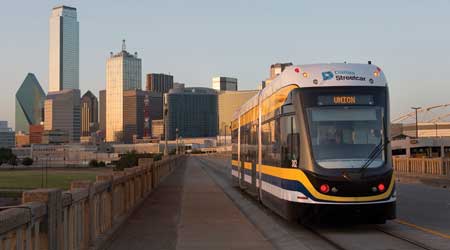
The Dallas-Fort Worth (DFW) population is the nation’s fastest expanding region in terms of the number of residents, according to U.S. Census Bureau estimates. Between July 2015 and July 2016, the area’s population jumped from 7,089,888 to 7,233,323. The North Central Texas Council of Governments has estimated DFW's population is expected to reach nearly 9 million people by 2027.
And as the population boom continues, DART aims to provide even more rail services to get people to where they need to go. Next up: planning and design for the 2.34-mile D2 Subway, which will add a second rail line through downtown Dallas. Although earlier plans called for D2 to be constructed half at grade and half underground, in September 2017 both the Dallas City Council and DART's board approved a locally preferred alternative that calls for building the entire line underground. That alternative is now undergoing the environmental review process.
"Obviously, with a rail line going through downtown Dallas we had a lot of folks interested in where the alignment would be," says Thomas of the environmental review. "We had a very robust public process that ended with the stakeholders and the public determining that the preference really was to have the complete alignment underground."
Currently, the $1.3 billion D2 project is "closing in on 10 percent design," according to Thomas, who added that the alignment is under revision to address stakeholders’ concerns, such as the location of utilities and building foundations. Another round of public and stakeholder meetings on the alignment will be scheduled this spring.
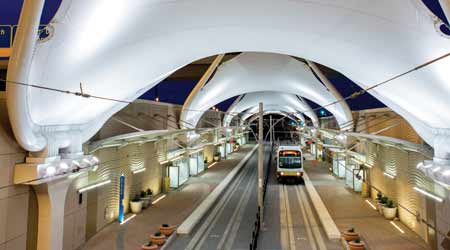
DART officials are anticipating a record of decision from the Federal Transit Administration (FTA) on the project sometime in the next two years. That FTA decision is key to determining whether the D2 project will qualify for federal funding under the Capital Investment Grant (CIG) program to pay for half of its cost; the remainder would be funded by local sales taxes.
DART officials remain optimistic that the FTA will approve the grant, despite the Trump administration's past budget proposals to slash transit-rail funding. In February, the FTA gave the proposed project a justification rating of "medium-high" — a good sign that it will qualify for federal dollars, says Thomas.
"We had the opportunity to testify before Congress relative to the funding of the CIG program included in the FAST Act," he says of the federal Fixing America's Surface Transportation legislation. "The good news is that Congress is honoring that bill and funding it at least through September. So, we remain optimistic."
Switching the preferred alignment to an underground line did delay the timeframe for D2's project development phase, but "we're still shooting for a 2024-25 revenue service date," he adds.
DART officials have said D2 is necessary to expand capacity and improve service reliability for riders traveling through downtown Dallas. Currently, all four of DART’s existing light-rail lines converge on the same track through the downtown. The D2 Subway will enable DART to redistribute the rail lines between two downtown rail corridors.
Once the subway is completed, the Green and Orange light-rail lines would be rerouted to the new downtown subway to increase capacity, and the Red and Blue lines would remain on the existing downtown rail line.
While the development phase of D2 ramps up, DART also is pursuing the long-awaited Cotton Belt regional commuter-rail line that would connect the northern part of the agency’s service area to other points in North Texas. When completed, the 26-mile Cotton Belt will serve Addison and extend to the Trinity Metro's TEXRail regional line (now under construction) and Dallas/Fort Worth International Airport.
In 2016, DART advanced the Cotton Belt's development to the year 2022 as part of the agency’s 20-year financial plan. The alignment spans the cities of Grapevine, Coppell, Dallas, Carrollton, Addison, Richardson and Plano. The project’s main purpose is to provide rail connections to major employment, population and activity centers in North Texas. Three DART light-rail lines would connect with the Cotton Belt: the Red/Orange Lines in Richardson/Plano, the Green Line in Carrollton, and the Orange Line at DFW Airport and the airport’s Skylink people mover.
In September 2017, DART's board approved new debt resolutions to provide funding mechanisms for the Cotton Belt, which is estimated to cost $1.1 billion. How the project will be paid for isn’t yet entirely determined, but DART is pursuing a $1.1 billion loan through the Federal Railroad Administration’s Railroad Rehabilitation and Improvement Financing program.
Initially, DART considered pursuing CIG grants to fund the project and analyzed other funding scenarios laid out by the North Central Texas Council of Governments. But once it was determined that the D2 and Cotton Belt projects would be developed and built at the same time, DART officials decided to pursue the CIG funding for D2 and conventional debt — in this case, a low-interest RRIF loan — for the Cotton Belt project, according to DART Executive Vice President and Chief Financial Officer David Leininger.
"Our financial plan dictates how much we pursue in grant funding and how we allocate it," he says. Additionally, there's a possibility of tax increment financing being available to help support the Cotton Belt's operational expenses.
Meanwhile, DART last month began soliciting public comments on the draft environmental impact statement (DEIS) for the Cotton Belt project. Public hearings on the DEIS have been slated for May 14-15 and comments will be accepted through June 4.
But the Cotton Belt and D2 Subway — along with the planned Dallas Streetcar Central Link to the M-Line Trolley — likely won’t be the end of DART's pursuit of more rail-service options; agency officials are reviewing the possibility of extensions into west Dallas and east of downtown Dallas.
"DART owns extensive railroad right of way throughout North Texas to give us the flexibility to add rail in new areas as warranted," said VP Lyons.
And while looking to the future, the agency also is studying the impact new technology will have on how it provides transportation to North Texans.
"You've got modes of transportation that exist now that didn’t exist three years ago, much less 10 years ago," Thomas says. "It's really rocking the passenger transportation world. And at DART, we really do believe that we are best suited to be in the position to put all the modes together."
For example, DART is exploring the development of an app for riders to map out their entire transportation trip through the area, whether that's via light or commuter rail, bus, bicycle, or rideshare services such as Uber and Lyft. The app would allow users to search the best transportation route and modes based on personal criteria, such as the cheapest or fastest ways to get to where they're going. Leininger and his team are working on such an app now, says Thomas.
"Our goal will be to allow [the rider] to pay for the entire trip on one app," he adds. "We hope to have it in place by the end of this year."
Transit is here to stay
Thomas and other DART officials don't buy the theory espoused by some transportation industry observers who believe that rideshare services and/or autonomous vehicles eventually will put public transit agencies out of business. Such services will only add to the plethora of transit options available, they believe.
To stay relevant, transit agencies will need to figure out how to best connect those many options for the traveling public's convenience.
"We see it as giving people the opportunity to make the choice of getting out of their car or staying in their car to travel," says Thomas. "But, if they get out of their car, we want to make sure they have a quality transportation system that includes light-rail and commuter-rail service between Fort Worth and Dallas."
Email questions or comments to julie.sneider@tradepress.com.
Keywords
Browse articles on Dallas Area Rapid Transit DART Gary Thomas D2 Subway Cotton Belt light rail commuter rail Trinity Railway Express TRE Fort Worth Transportation Authority Trinity Metro Blue Line Todd Plesko David Leininger TEXRail Dallas Streetcar M-TrolleyContact Progressive Railroading editorial staff.


 2025 MOW Spending Report: Passenger-rail programs
2025 MOW Spending Report: Passenger-rail programs
 Gardner steps down as Amtrak CEO
Gardner steps down as Amtrak CEO
 Guest comment: Oliver Wyman’s David Hunt
Guest comment: Oliver Wyman’s David Hunt
 Women of Influence in Rail eBook
Women of Influence in Rail eBook
 railPrime
railPrime




